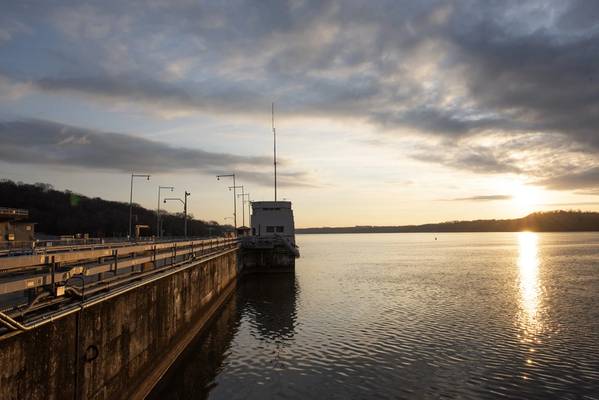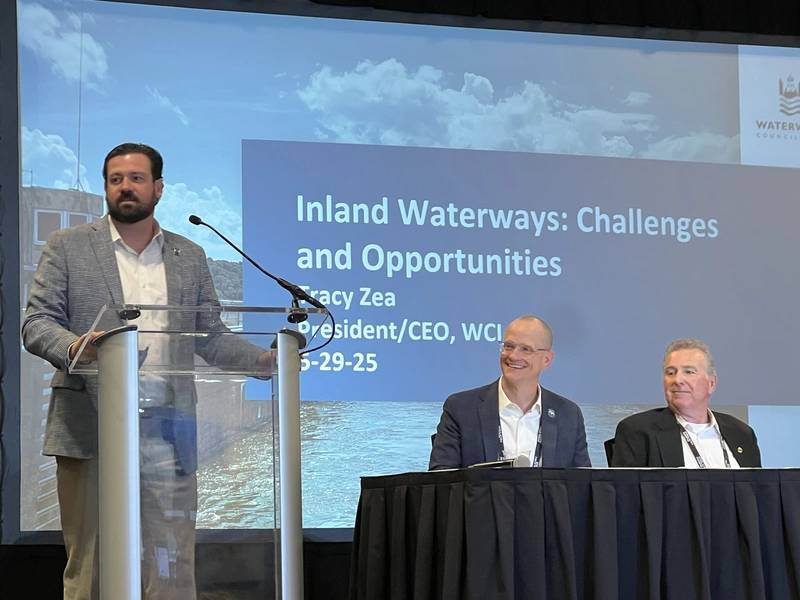
On May 15, the U.S. Army Corps of Engineers released its Fiscal Year (FY) 2025 Work Plan that allocated funds from the FY25 Full-Year Continuing Appropriations and Extensions Act. That bill provided funding for the Corps’ Civil Works mission, typically funded in the annual Energy and Water Development appropriations bill.
The Corps’ FY25 Work Plan provided nearly $200 million for inland waterways construction projects, of which nearly $50 million will come from the Inland Waterways Trust Fund (IWTF). The IWTF is funded through a 29-cents-per-gallon diesel fuel tax paid for by commercial operators on the inland waterways system.
The $200 million is significantly down from FY24’s record level funding of $456 million and is well below the capability expressed by the Corps for inland construction projects in FY25. But, because regular appropriations were not enacted, the full-year Continuing Resolution (CR) that is currently funding the federal government – while based on FY24 levels – does not guarantee specific programs within the Corps’ Civil Works mission will receive funding in FY25.
Also, FY24 funding included Infrastructure Investment and Jobs Act (IIJA) monies which are not available to be offset for FY25. As a result, the lower funding available for Corps construction in FY25 was not unexpected.  WCI was disappointed with the smaller funding levels for two inland construction projects, but there was a distinct possibility that $0 could have been allocated. Tracy Zea, President/CEO, Waterways Council, Inc., speaking recently in Nashville at the IMX 2025 conference.
WCI was disappointed with the smaller funding levels for two inland construction projects, but there was a distinct possibility that $0 could have been allocated. Tracy Zea, President/CEO, Waterways Council, Inc., speaking recently in Nashville at the IMX 2025 conference.
Photo Greg Trauthwein
The Corps selected the following inland waterways construction projects to receive funding in FY25:
The Work Plan also included funding for an inland waterways study in the Investigations account for Bayou Sorrel (Gulf Intracoastal Waterway) - $2.4 million (Funds will complete the feasibility phase)
But in the FY25 Work Plan WCI believes there was a significant missed opportunity to advance the inland waterways construction program. The Office of Management & Budget’s (OMB) decision to allocate $122.9 million for T.J. O'Brien's major rehabilitation project surprised many within the Corps and WCI. That additional funding could have been directed toward Chickamauga Lock or Montgomery Lock, which would have substantially reduced those projects’ funding needs in FY26 and lowered the overall contingency risk associated with them.
WCI was disappointed with the smaller funding levels for two inland construction projects, but there was a distinct possibility that $0 could have been allocated. The Bayou Sorrel funding was a very welcome big win in this Work Plan and puts that important project one step closer to a Director’s Report detailing the Corps’ recommendation on lock replacement to address navigation and flood risk objectives.
At press time, we are awaiting the President’s FY26 budget. That budget is expected to be austere as well. WCI urges Congress to pass a timely FY26 appropriations bill to ensure that ongoing navigation construction projects continue without delay.
The goal is to finish these critical projects as soon as is possible, in order to return transportation cost savings to the Nation, to enhance competitiveness opportunities for U.S. shippers in the world marketplace, to alleviate traffic congestion on our highways, and to modernize and recapitalize the profound natural gift that is America’s inland waterways.



